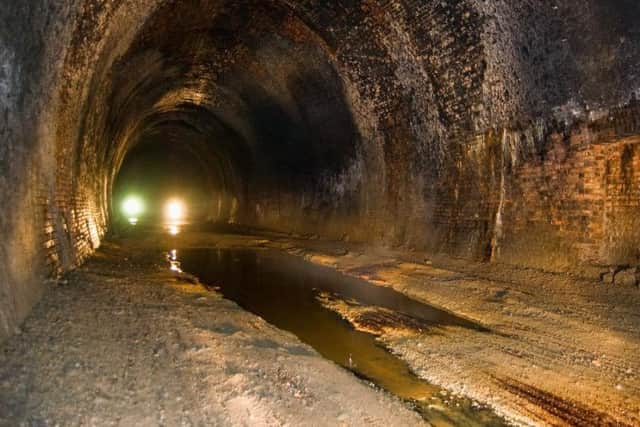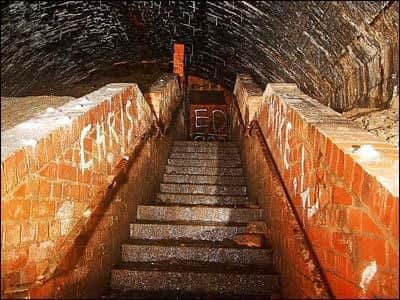These are the forgotten underground tunnels and bunkers which still exist beneath Harrogate
As well as the UCI cycling championships, the Stray, Valley Gardens and Bettys tearooms, there is a hidden side to Harrogate, one which most people have never experienced.
Whispers of secret spaces under Harrogate’s streets may sound far-fetched but, in fact, the town’s rich history over the decades and centuries has produced several mysterious tunnels and bunkers built for good reasons but now disused.
Advertisement
Hide AdAdvertisement
Hide AdFrom a Yorkshire Water bunker to a nuclear one and on to abandoned railway lines, the Harrogate Advertiser has explored five of these forgotten features of Harrogate.


1. The abandoned Brunswick Tunnel
Abandoned for 146 years now, if you manage to venture underground at the tree-lined Langcliffe Avenue, it is still possible to see where the sleepers used to be in this old railway tunnel built during the golden age of steam for the opening of a new station to welcome the arrival of the North Eastern railway.
Located near where Hornbeam Park can be found today, the original project saw George Hudson and the York and North Midland railway complete the line from Church Fenton to Harrogate in 1848.
The tunnel’s route took it from what is now Hornbeam Park station, 400 yards below ground, before re-emerging off Leeds Road/Park Drive roundabout.


Advertisement
Hide AdAdvertisement
Hide AdThe railway line then continued its course above ground to Brunswick station opposite Trinity Church, on Trinity Road.
The station itself only lasted 14 years before the branch line was made obsolete.
The tunnel did act as an air raid shelter in the Second World War with steps down from the St George’s Road roundabout.
2. Harrogate’s nuclear bunker
It came as a surprise when Harrogate Borough Council submitted a nuclear bunker as part of the annual, district-wide Heritage Open Days in 2016. Few people knew Harrogate even had a nuclear bunker.
Advertisement
Hide AdAdvertisement
Hide AdBuilt in 1958, the Harrogate Civil Defence Centre was a prefabricated single storey office block located near Grove Road County Primary School off Skipton Road, it was built on top of a Second World War RAF bunker.
It housed two Perkins diesel engines which drove the generator and air scrubbers. There was a 5000-gallon tank of red diesel in there too.
Below ground was the living accommodation, kitchens, dormitory, showers, toilets etc and the plotting/reporting rooms. All communications equipment, wall charts etc were still present.
For a time, it became an archive of local council records before both the above-surface building and the bunker below were converted into school classrooms in 1991.
3. Disused Prospect Tunnel in Harrogate
Advertisement
Hide AdAdvertisement
Hide AdAlso part of the old Church Fenton-to-Harrogate line in the Victorian era, the 825-yard long Prospect Tunnel was located near Follifoot.
On July 21, 1845, a Parliamentary Act was passed authorising George Hudson’s York & North Midland Railway to construct a 18½-mile line connecting Church Fenton with Harrogate.
Part of a huge project which included the 31-arch Crimple (Valley) Viaduct, the tunnel was later the first to be closed under Beeching in 1964. In 2017 a resident reported to Follifoot Parish
Council that the water level in the old tunnel was causing a problem.
4. The Forbidden Corner in North Yorkshire
Advertisement
Hide AdAdvertisement
Hide AdBuilt in the 1980s by the owner of Tupgill Park near Leyburn, Colin Armstrong, with architect Malcolm Tempest, as a private pleasure garden, such was public interest, it was soon decided to open it to the public.
A unique labyrinth of tunnels, chambers, follies and surprises, although none of the subterranean paths and passages actually lead anywhere!
5. Hidden spot in Valley Gardens
Very little is known about the Valley Gardens culvert - except only that it does definitely exists.
Reportedly, it runs underground from Valley Gardens entrance, then underground beneath Crescent Road to Ripon Road, and to the north of the Royal Hall before joining with the culverted Coppice Beck.
Advertisement
Hide AdAdvertisement
Hide AdLeading Harrogate historian Malcolm Neesam remembers it from his childhood days.
He said: “When I was a boy it was possible for daring souls to enter the culvert and crawl under the road, if you were one of those ‘daring souls’.”